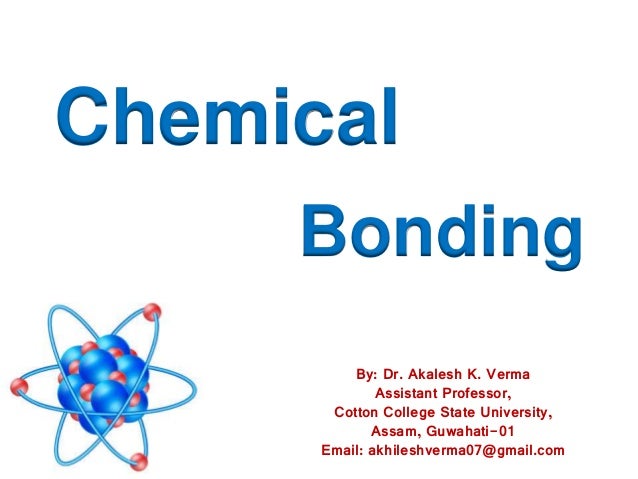
What are some examples of chemical bonds? How do you describe a chemical bond? Are these chemical bonds ionic or covalent? What do chemical reactions have to do with chemical bonds?
A chemical bond is a lasting attraction between atoms, ions or molecules that enables the formation of chemical compounds. The bond may result from the electrostatic force of attraction between oppositely charged ions as in ionic bonds or through the sharing of electrons as in covalent bonds. Chemical bonds are the glue that hold molecules together.
We will learn about the different kinds of bonds , ways chemists draw bonds and molecules, and how the type of chemical bonding affects the bulk properties of a material. We will cover electronegativity, Lewis dot structures, VSEPR, bond hybridization, and ionic, covalent, and metallic bonds. Any of several forces, especially the ionic bond , covalent bond , and metallic bond , by which atoms or ions are bound in a molecule or crystal.
When two atoms approach each other these outer electrons interact. The most common bond in organic molecules, a covalent bond involves the sharing. Ionic bonding involves a transfer of an electron,. Two atoms connected by a covalent bond may exert different attractions for.
Multiple covalent bonds. There are many instances where more than one pair of valence electrons are shared. An atom that prefers to lose electrons will often form a bond with an atom that prefers to gain electrons. Bonds are formed when valence electrons, the electrons in the outermost electronic “shell” of an atom, interact. The nature of the interaction between the atoms depends on their relative electronegativity.
In general, strong chemical bonds are found in molecules, crystals or in solid metal and they organize the atoms in ordered structures. In Lewis representation, the number of bonds present between two atoms is called the bond order. Greater the bond order, greater is the stability of the bond during chemical bonding i. Click on the tabs to see animations of how pairs of elements in the periodic table bond together. Learn about the role of valence shell electrons and attractive forces in three types of chemical bonds : covalent, ionic, and metallic.
Fluorine (F) and bromine (Br) are in the same group on the periodic table. Learn types and examples of chemical bonding. Atoms with large differences in electronegativity. As chemical bonds are central to chemistry which indicates the strength of attractions within molecules and chemists understand the properties of matter in terms of the types of bonds that hold atoms together. A covalent bond indicates the sharing of electrons between atoms.

Atoms bonded stay together unless the needed amount of energy is transferred to the bond. The atoms in molecules, crystals, metals and diatomic gases are held together by chemical bonds. In bonding, atoms lose, gain, or share electrons in order to have the same number of electrons as the noble gas that’s nearest on the periodic table. Covalent bonds can be either be Polar or Non-Polar in nature. Ionic, covalent, and metallic bonds are formed by combinations of metals and nonmetals.
When two elements engage in ionic bonding, one or more electrons are transferred. Atoms have a tendency to gain or lose electrons so that their outer orbitals become. In the discussion of the ionic bon it was noted that chlorine readily gains an.

Bonding in metals is distinct from that in their salts,. Covalent compounds have covalent bonds , ionic compounds have ionic bonds.
No comments:
Post a Comment
Note: only a member of this blog may post a comment.